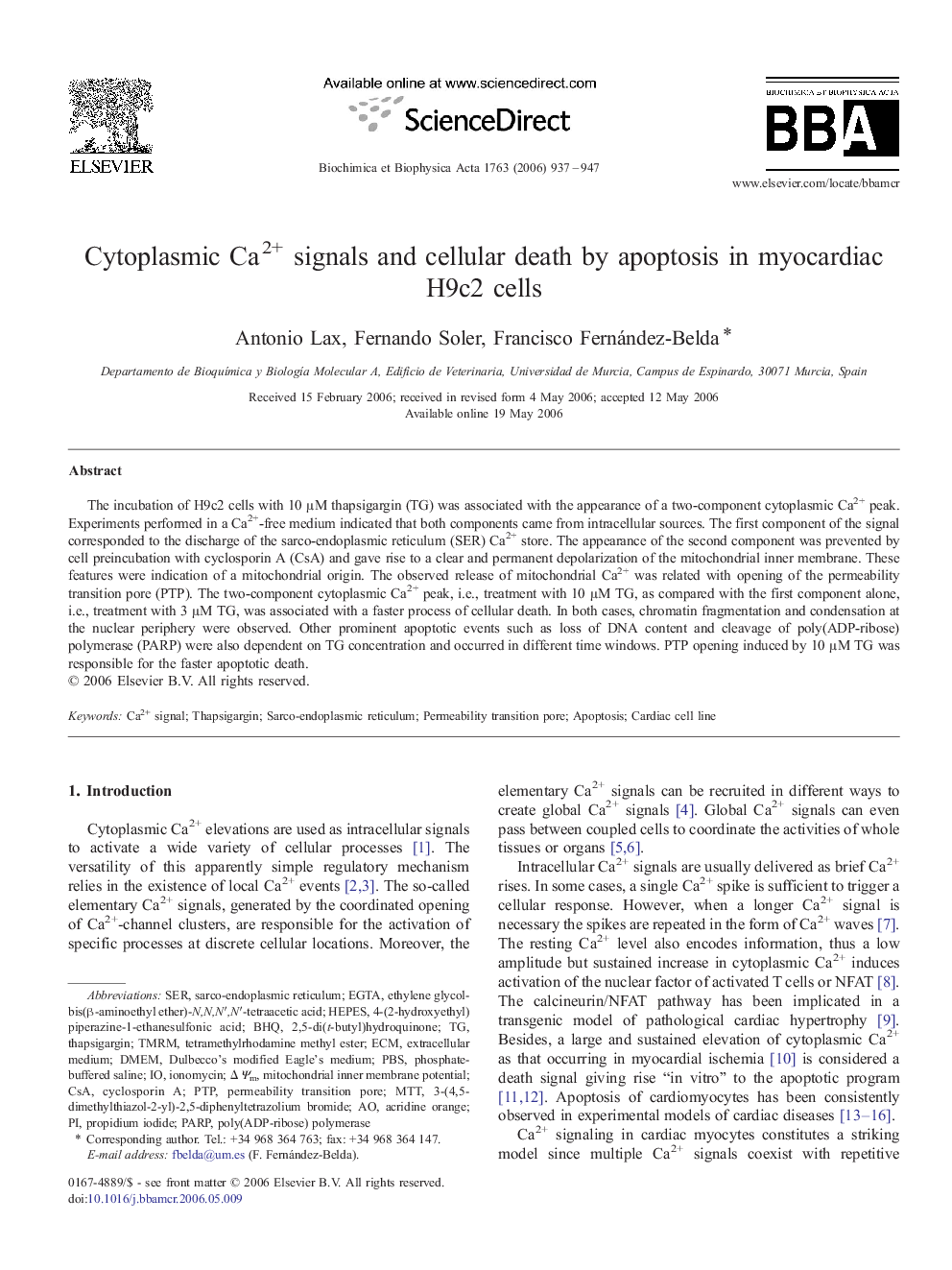| Article ID | Journal | Published Year | Pages | File Type |
|---|---|---|---|---|
| 1951664 | Biochimica et Biophysica Acta (BBA) - Molecular Cell Research | 2006 | 11 Pages |
The incubation of H9c2 cells with 10 μM thapsigargin (TG) was associated with the appearance of a two-component cytoplasmic Ca2+ peak. Experiments performed in a Ca2+-free medium indicated that both components came from intracellular sources. The first component of the signal corresponded to the discharge of the sarco-endoplasmic reticulum (SER) Ca2+ store. The appearance of the second component was prevented by cell preincubation with cyclosporin A (CsA) and gave rise to a clear and permanent depolarization of the mitochondrial inner membrane. These features were indication of a mitochondrial origin. The observed release of mitochondrial Ca2+ was related with opening of the permeability transition pore (PTP). The two-component cytoplasmic Ca2+ peak, i.e., treatment with 10 μM TG, as compared with the first component alone, i.e., treatment with 3 μM TG, was associated with a faster process of cellular death. In both cases, chromatin fragmentation and condensation at the nuclear periphery were observed. Other prominent apoptotic events such as loss of DNA content and cleavage of poly(ADP-ribose) polymerase (PARP) were also dependent on TG concentration and occurred in different time windows. PTP opening induced by 10 μM TG was responsible for the faster apoptotic death.
